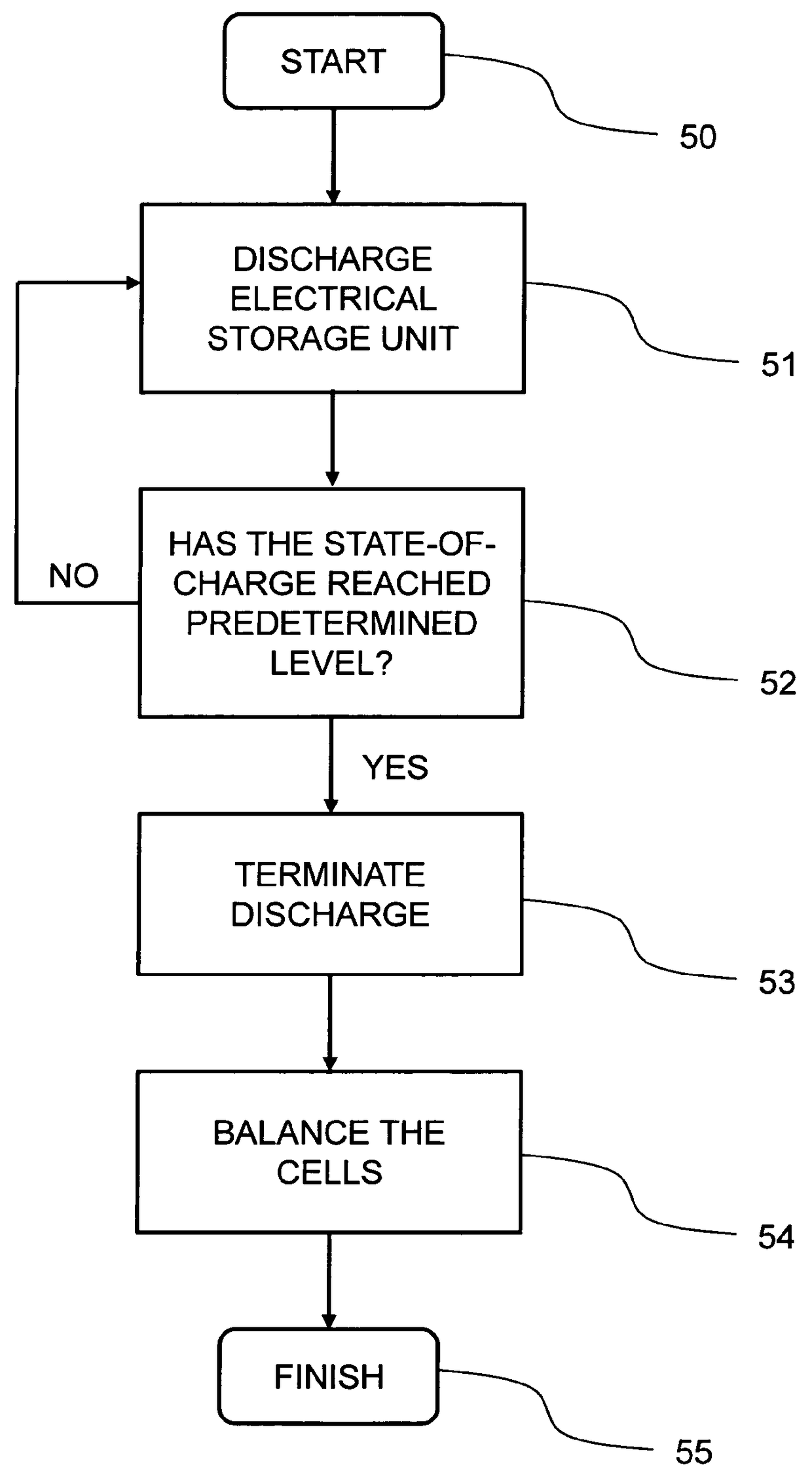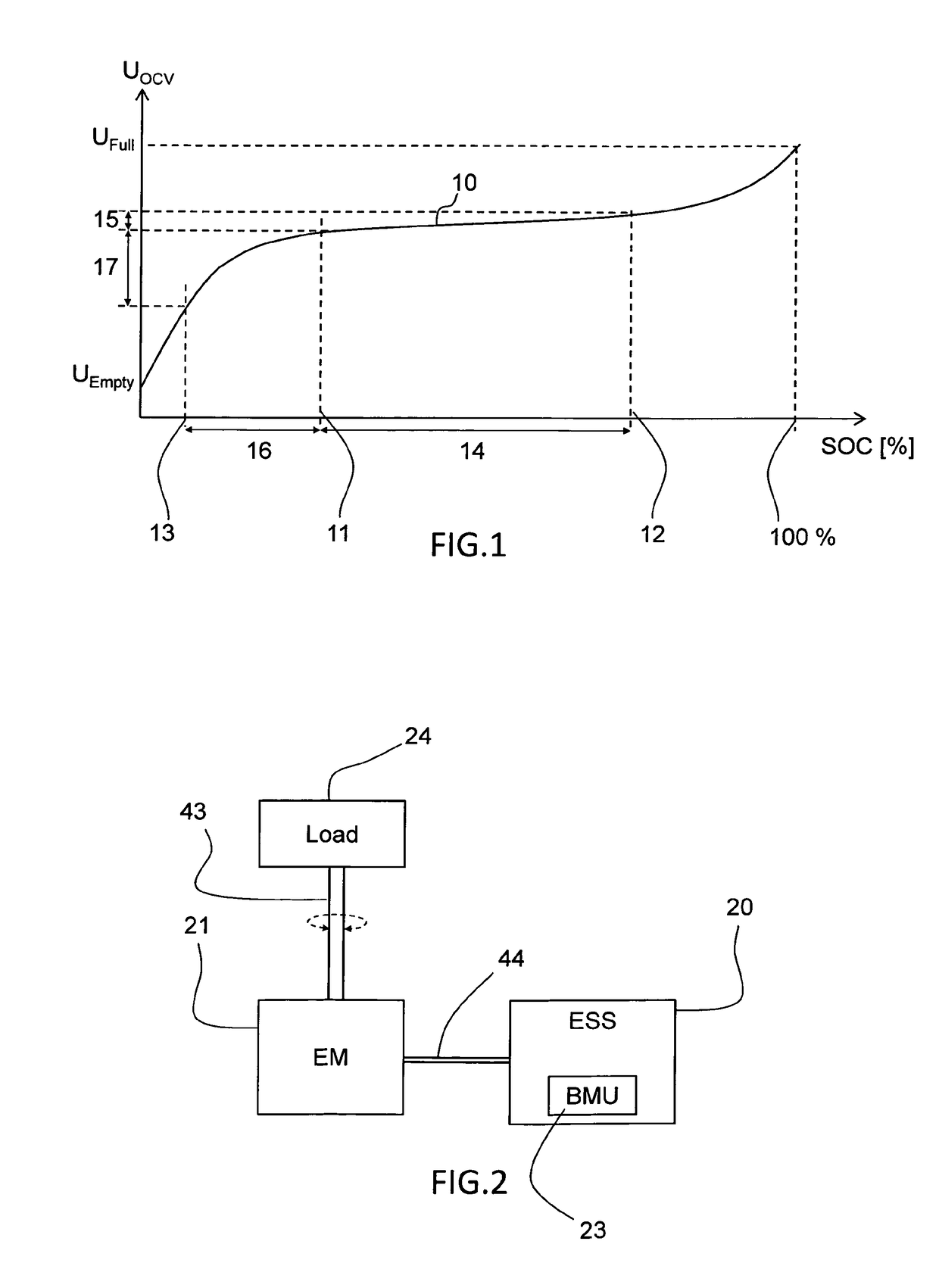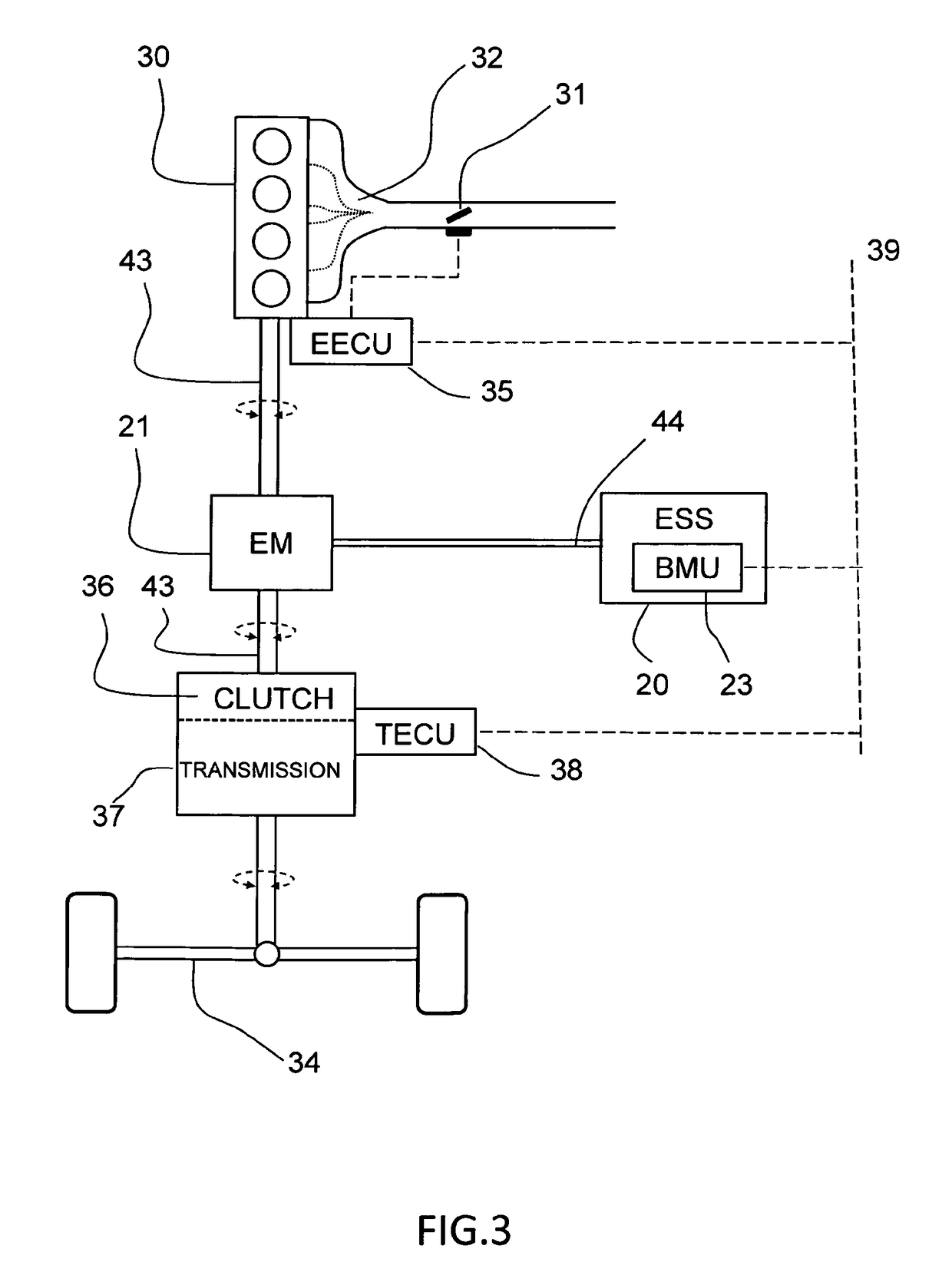Method for balancing the voltage of battery cells
a battery cell and voltage balancing technology, applied in the direction of battery/fuel cell control arrangement, electric devices, propulsion by batteries/cells, etc., can solve the problem of limiting the capacity and lifetime of the battery pack as a whole, shortening the overall balancing time of the battery cell, and affecting the discharge rate of the electrical storage system. , the effect of high discharge rate of the electrical storage system
- Summary
- Abstract
- Description
- Claims
- Application Information
AI Technical Summary
Benefits of technology
Problems solved by technology
Method used
Image
Examples
Embodiment Construction
[0029]Various aspects of the disclosure will hereinafter be described in conjunction with the appended drawings to illustrate and not to limit the disclosure. Like designations denote like elements, and variations of the described aspects are not restricted to the specifically shown embodiments, but are applicable on other variations of the disclosure.
[0030]FIG. 1 shows a graph of the output open circuit voltage OCV as a function of the chemical state of charge SOC of a typical electrochemical cell, which graph is also commonly referred to as “voltage discharge curve”. The electrochemical cell may preferably be a lithium cell. The electrical storage system may comprise at least 100 series-connected electrochemical cells and preferably at least 150 series-connected cells, for example lithium cells. The electrical storage system may also be referred to as a battery pack and the output voltage of the electrical storage system equals the accumulated output voltage of each cell of a comm...
PUM
 Login to View More
Login to View More Abstract
Description
Claims
Application Information
 Login to View More
Login to View More - R&D
- Intellectual Property
- Life Sciences
- Materials
- Tech Scout
- Unparalleled Data Quality
- Higher Quality Content
- 60% Fewer Hallucinations
Browse by: Latest US Patents, China's latest patents, Technical Efficacy Thesaurus, Application Domain, Technology Topic, Popular Technical Reports.
© 2025 PatSnap. All rights reserved.Legal|Privacy policy|Modern Slavery Act Transparency Statement|Sitemap|About US| Contact US: help@patsnap.com



